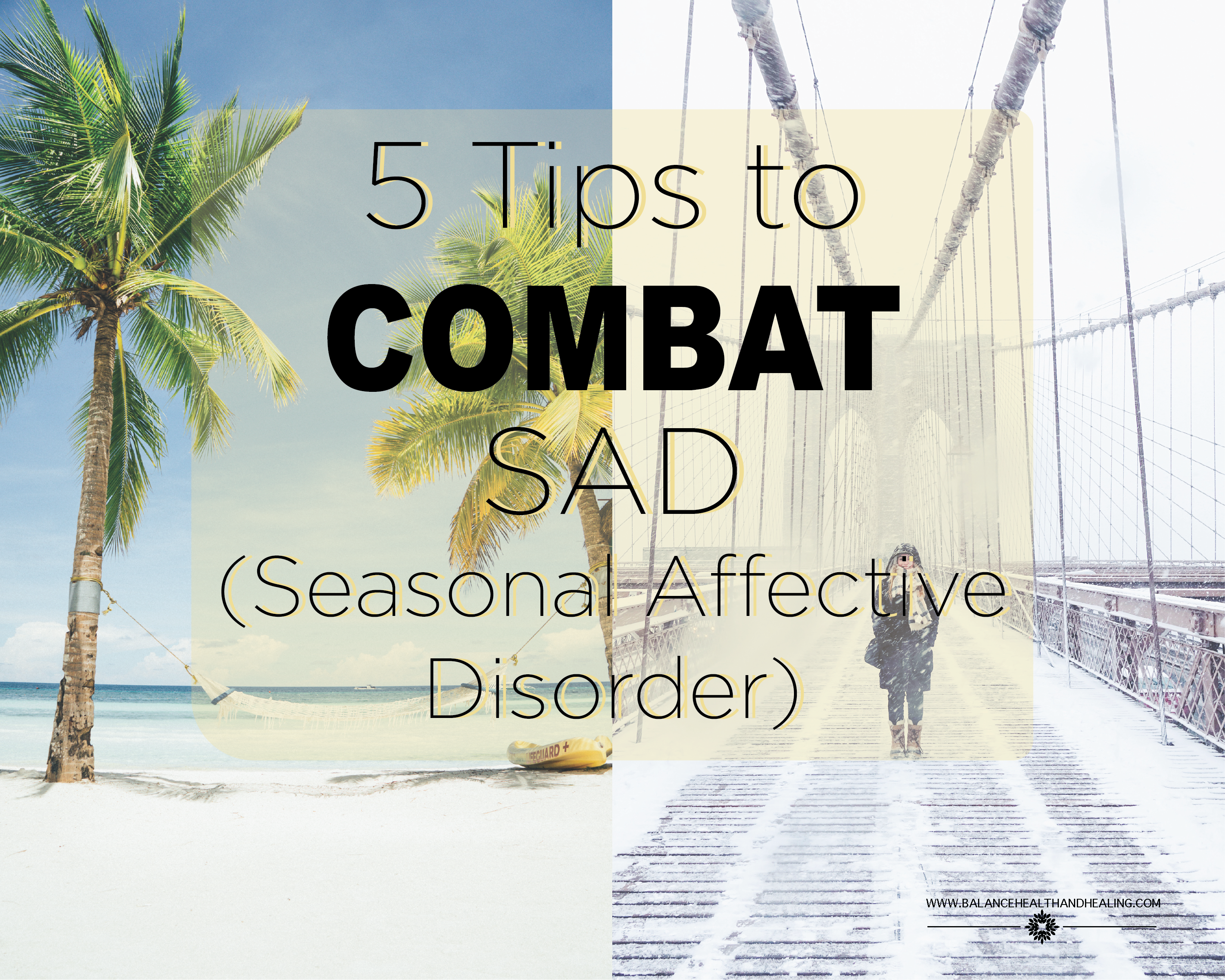I was born and raised in Hawaii so for most of my life, the only seasonal changes I experienced were summer, when it felt hot as Hades, and winter, when it was slightly cooler and rainy. I was in for a rude awakening when I moved to Utah right before winter season in 2011 with my yearlong wardrobe of shorts, t-shirts, and slippers (which I have since learned that most people around here call flip flops). Since then, I have been better prepared with winter clothes, anti-freeze liquid for my car, and salt to sprinkle on my driveway and I’ve learned the hard way to not run or even walk briskly on ice, slow down on the freeway, and shovel the snow in the driveway before it sticks.
Aside from the typical seasonal adjustments that we have to make, the lack of sunlight, shorter days, and weather during the winter months, lead to more than three million people in the United States experiencing seasonal depression, also known as seasonal affective disorder (SAD). Do you feel depressed, moody, low energy specifically during the winter months? Do you feel less motivated, uninterested in daily activities, or difficulty concentrating at this time of the year? What about changes in appetite or sleep patterns, do you experience that when it is cold outside? Now, I’m not encouraging you to self-diagnose, but it is possible that you, or someone you know, experience SAD.
weather during the winter months, lead to more than three million people in the United States experiencing seasonal depression, also known as seasonal affective disorder (SAD). Do you feel depressed, moody, low energy specifically during the winter months? Do you feel less motivated, uninterested in daily activities, or difficulty concentrating at this time of the year? What about changes in appetite or sleep patterns, do you experience that when it is cold outside? Now, I’m not encouraging you to self-diagnose, but it is possible that you, or someone you know, experience SAD.
Here are several tips when dealing with winter blues or seasonal affective disorder:
1. Phototherapy
Get a special light box that mimics natural outdoor light and turn it on when you wake up or as you are getting ready for your day. Before going out to purchase a light box, consult with your medical doctor to see which one would be most effective for you and discuss how and when to utilize the light box. While meeting with your doctor, check your vitamin D levels to ensure that it is at an appropriate level during the winter.
2. Spend Time Outside
Spend some time outside everyday and if you have to, schedule it so that you remember. Naturally, during the winter months it is easy to stay indoors where it is warm around the fireplace but making time to go outside for a few minutes everyday will give your body the exposure to fresh air and natural light that it needs.
3. Make an Appointment
Schedule an appointment with a mental health professional during the fall and winter months. If you notice yourself struggling with depression during the winter, make an appointment to meet with a counselor or therapist before winter hits. Although we are half way through our winter season this year, it is not too late to meet with a therapist to address your issues with your mental health.
4. Exercise Regularly
During warmer months, it is easier and even more enjoyable to get physical movement outside through hikes, marathon runs, even a nature walk. If you typically enjoy exercising outdoors, it might be harder to do on snowy days. Have a backup plan and join a gym, even if its just to get through this time of year when it is cold outside.
5. Socialize
The holidays just passed so you might have taken some time off at the beginning of the year to recover from all the events and activities you attended. We are social beings so human interaction and connection is important, even on, especially on snowy days. You don’t have to throw a block party but try to reach out to one or two people who you feel close to. Call someone on the phone. Make plans to meet up. Check in with a close friend. Relationships are important.

